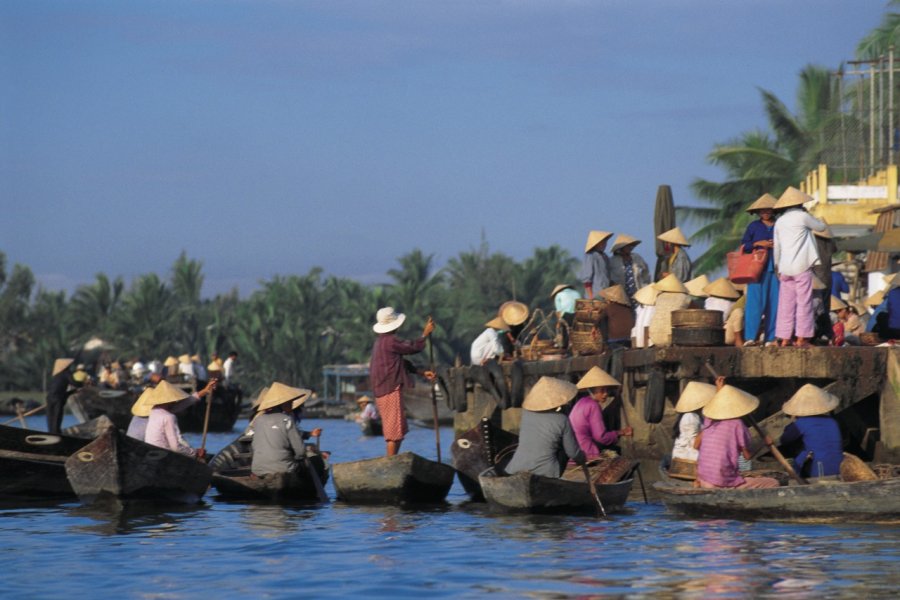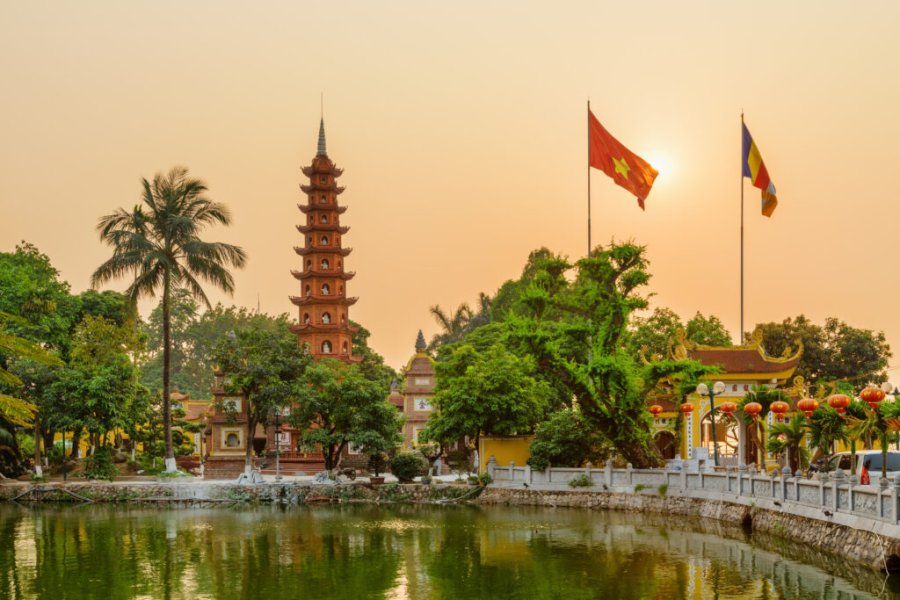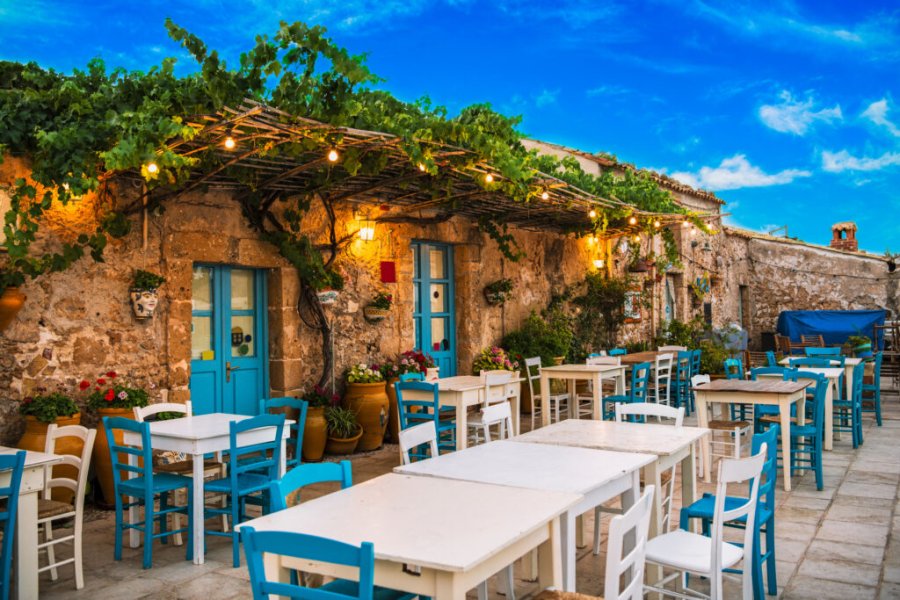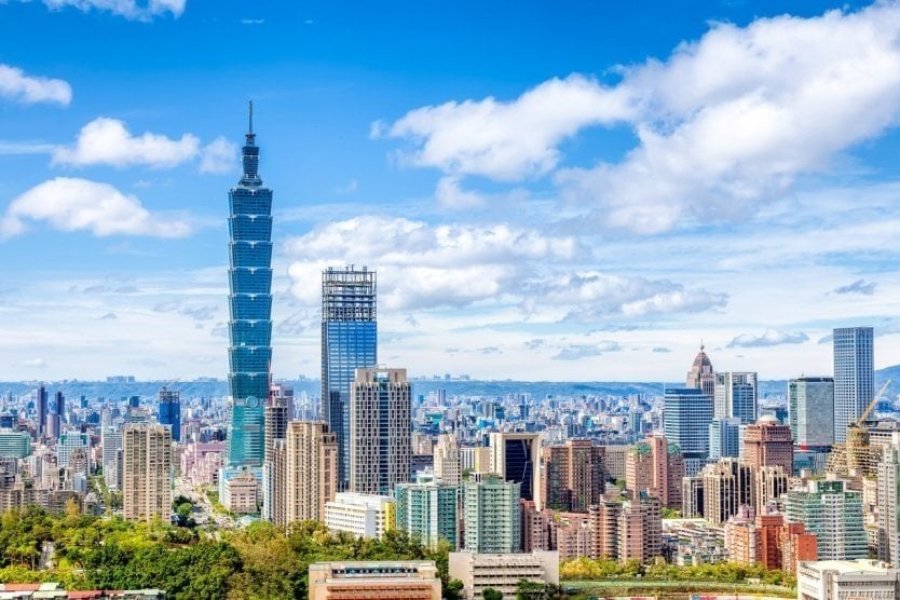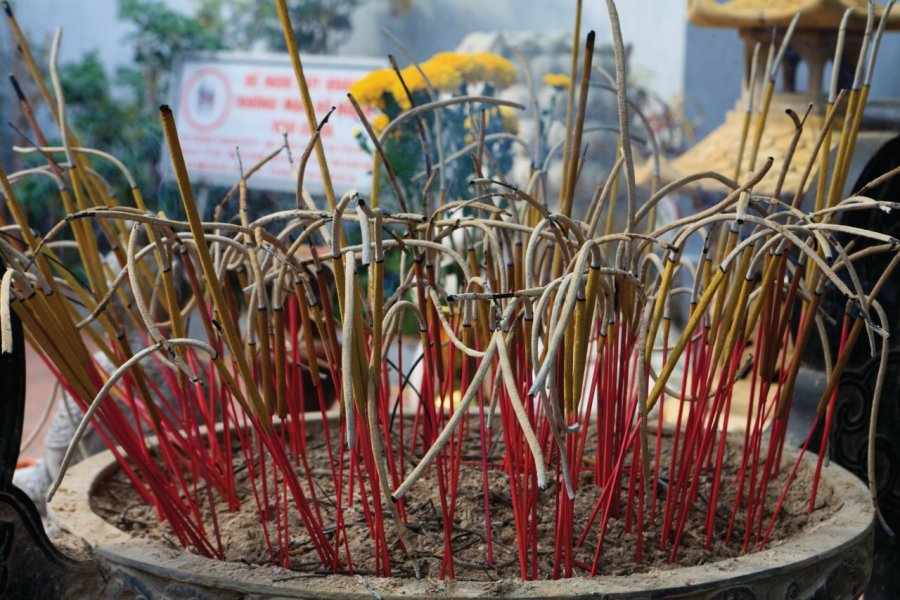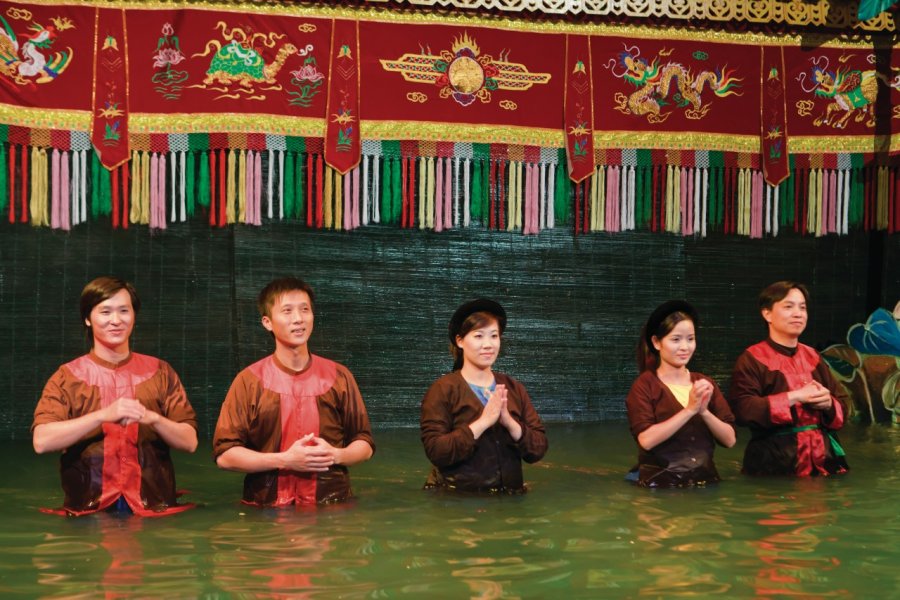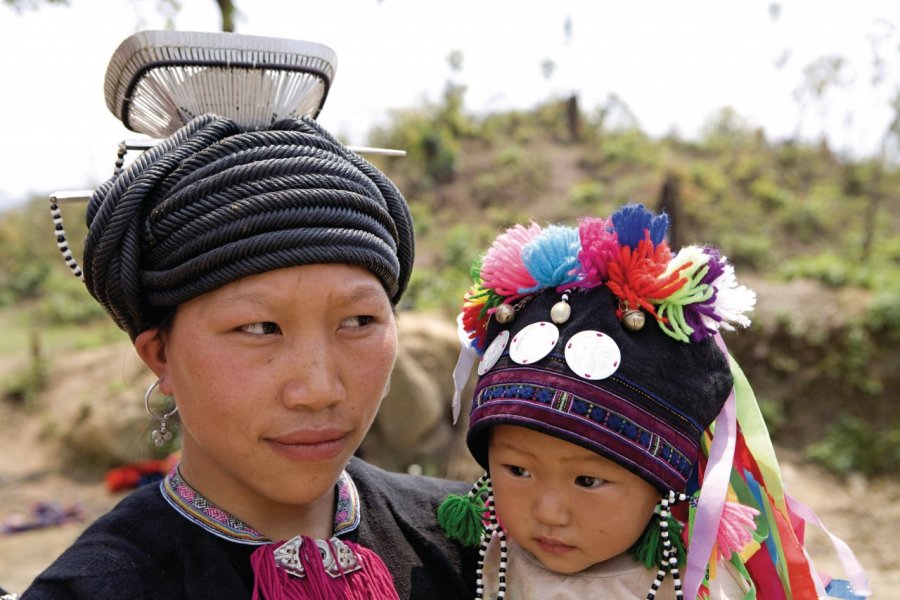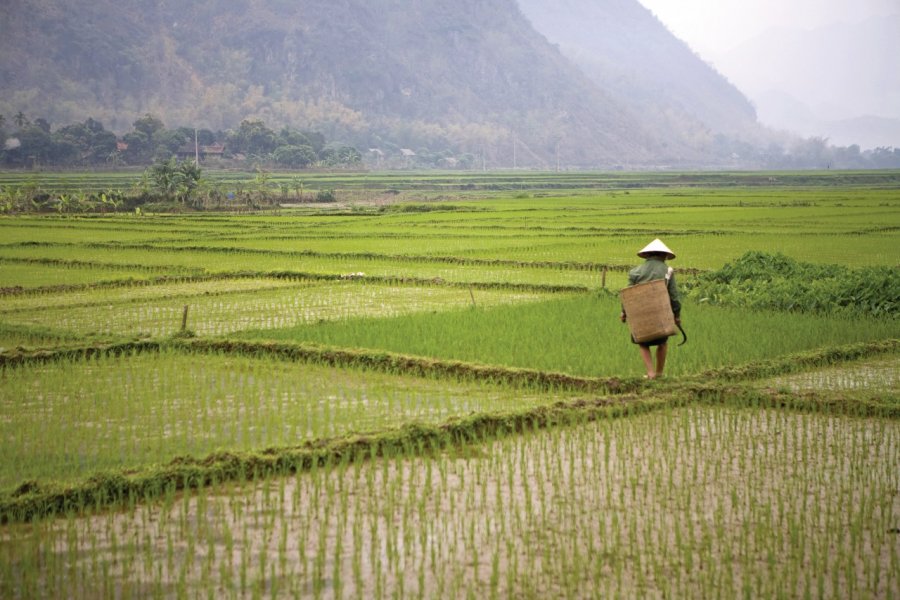Travel guide Vietnam
Ideally located at the crossroads of Southeast Asia, Vietnam is a travel destination that has managed to remain authentic while undergoing a tremendous economic and cultural transformation over the past 20 years.
A great asset for tourism and for those who wish to discover this beautiful country, especially since the new Asian dragon benefits from an extraordinary variety of landscapes and a precious historical heritage, a melting pot of civilizations and multiple influences whether in the north of Vietnam or in the south of Vietnam. You will be able to appreciate them during your stay in Vietnam by going off the beaten track and doing different tours in the country by choosing the best period for that (and a good tour guide). Terraced rice fields, bamboo forests, white sandy beaches, breathtaking waterfalls, marble mountains, majestic temples, colorful markets like Muong Khuong, Vietnam knows how to entertain, all wrapped up under a bright sun and in a lush tropical vegetation. Whether you go to Vietnam for your honeymoon, a family trip or a luxury trip, the must-see sites to discover with its Vietnam tour guide are numerous: from Hạlong Bay to the Mekong Delta, from Hanoi, the thousand-year-old capital, to Hồ Chí Minh City (formerly Saigon), the economic lung of the South, from the imperial city of Hué listed as a Unesco World Heritage Site to the remains of the Champa kingdoms, from the Perfume River to the Cham Islands. Vietnam is a great place for ecotourism and will dazzle you with its traditional cuisine, which is also very diverse from one region to another and illustrated by the numerous Vietnamese culinary specialties. One thing is sure, you will return enchanted by your trip to Vietnam.
What to see, what to do Vietnam?
-
Book an activity
-
Customized travel
- The most beautiful cities Vietnam
When to go Vietnam ?
The best time to go to Vietnam is globally when the monsoon does not occur. These heavy rains, which can lead to landslides and, consequently, temporary cuts in roads or railways, generally affect the Red River basin in the north during the summer and, until November, the central provinces of Vietnam and the Mekong Delta in the south of the country. During the high season (July, August and September, and during the Têt period, the Vietnamese New Year, in January-February), prices increase in some establishments and given the narrowness of the country, you may feel like you are following a tourist highway. During the Têt, it is often difficult to travel from abroad to Vietnam because the means of transport are taken by storm by overseas Vietnamese returning home.
You may also need to adapt your departure if you are thinking of doing a tour in Vietnam including excursions to Cambodia, to discover Angkor, and Laos.
Suggested addresses Vietnam
Travel Vietnam
-
Find a hotel
-
Car Rental
-
International e-SIM package
-
Find a local agency
Le Viêt Nam s’étend sur 1 650 km et, étant donné l’état des routes et les spécificités de la circulation, les trajets sont longs et fatigants. Une escapade d’une semaine permet de découvrir l’une des deux grandes cités du pays, Hanoi au nord ou Hô-Chi-Minh-Ville au sud. Si vous disposez de trois semaines, le dilemme Nord ou Sud est résolu. Mais, du fait de la richesse culturelle et de la variété des paysages, les options restent multiples. Vous pourrez choisir une traversée du pays qui vous mènera d’un delta à l’autre, soit en train, soit par la route, en empruntant la route mandarine, qui longe la côte ou en suivant l’ex-piste Hô-Chi-Minh, qui passe par les hauts plateaux. Plutôt que de parcourir l’ensemble du pays, vous pourriez préférer privilégier un périmètre restreint. Cette option s’impose particulièrement à ceux qui voudraient découvrir les montagnes du nord et la vie des minorités ethniques.
Find unique Stay Offers with our Partners
How to go Vietnam
How to go alone
There are direct flights to Vietnam and especially to Ho Chi Minh City. Most of the tourists who decide to go to Vietnam go from Ho Chi Minh City to Hanoi. We advise you to start your trip in Hanoi, so you will go against the current. The price variation of air tickets to Vietnam depends on the airline you fly with, but more importantly, on the time of booking. In order to get the best prices, it is essential to book your tickets well in advance. Remember to buy your tickets six months before departure and take your Vietnam guidebook with you!
How to go on a tour
There is no lack of tour operators and offers to go to Vietnam. Tailor-made trips or customized tours to travel through the country from North to South via Hanoi and Ho Chi Minh City, cruises in Halong Bay or along the Mekong River, seaside stays on the beautiful beaches of Phu Quoc with your feet in the sand and under the coconut palms, trekking and hiking in the Tonkin region... Many agencies also offer combined trips with Cambodia to discover the splendors of the Angkor site, and even with Laos.
How to get around
The car is the fastest and most practical way to get around Vietnam: rentals are done with a driver but if you have a taste for adventure you can drive provided you have an international license. Scooter and motorcycle rental is also possible in Vietnam, but beware of traffic which can be anarchic in the city. The road network is in good condition. Buses, a cheap solution, connect mostly the outskirts of cities but are a good way to discover the country. If the main lines are served by comfortable and modern buses, it will be less the case to reach the small towns. The "Open tour" buses, very popular with travelers, will offer you an appreciable flexibility in your different journeys by allowing you to make several stops at the stages of your trip, however there are few possibilities to meet the local population on board. As for the plane, about twenty cities are served by domestic airlines at affordable prices and it is also possible to take the train to go from the north to the south at a low price but at an average speed of 45 km/h.
Featured articles Vietnam
Discover Vietnam
Vietnam... This is a very old country, which from 1946 to 1975 experienced the longest war of the 20th century. These tragic events often overshadow the long history and rich cultural and spiritual heritage that have shaped the Land of the Dragon. In this chapter, we'll take a look at some of the historical milestones that have brought to light kingdoms swallowed up by time and a number of historic events, such as those of Champa, which has now disappeared. We'll also look at geography. Vietnam's landscapes are renowned for being sumptuous, but as elsewhere, the country's natural riches are threatened by rapid economic growth and the effects of climate change. Demographic and social issues are also addressed... A little vade-mecum for the happy traveler who sets out to discover this sometimes bewildering, but absolutely fascinating country.
Pictures and images Vietnam
The 12 keywords Vietnam
1. #Banyan (Cây da)
"A vegetal Hercules" (Paul Claudel). It can be found at the entrance of every village, market, in the courtyards of pagodas or even in the cities, at the bend in the street where it has not let itself be beaten down and where it has imposed its presence on the layout of new constructions. In the interlacing of its roots nests a small altar dedicated to the genius of the tree.
2. #Conical bonnet

Traditional headgear of the peasants, it is made with latanier leaves. Its frame is composed of bamboo hoops on which are sewn, with nylon threads, the three layers of latanier that ensure greater resistance. The motorcycle helmet is now much more widespread than the iconic conical hat...
3. #Diên Biên Phu
If Waterloo is remembered as a bleak plain, Diên Biên Phu is referred to as "the basin". 300 km west of Hanoi, Diên Biên Phu is the name of a valley at the crossroads of the roads to Laos. On May 7, 1954, after 55 days of fighting, the French expeditionary corps suffered a terrible defeat at the hands of General Giap's troops.
4. #Lotus
What could be more beautiful than the lotus flower? A symbol of purity, its white or pink flowers rise above the muddy water. The flowers exude a delicious fragrance. The successive metamorphoses of the leaf and flower at different stages of growth make the lotus an inexhaustible source of philosophical and artistic inspiration.
5. #Oriental Sea

The "East Sea" (Biển Đông), is the hot spot of the moment and... don't say China Sea! Vietnam is seeking to develop its maritime space: transport and communications, fishing and aquaculture, oil and gas exploitation... But it is up against the ambitions of its powerful northern neighbour and its growing fleet.
6. #Nuoc mâm

Indispensable condiment for any Vietnamese table. It is a brine obtained from fish that marinate for six months to a year, covered with salt, in large wooden vats. The best, obtained from anchovies (ca com), comes from the island of Phu Quôc. The Romans were already producing a similar mixture called "garum".
7. #Water pipe
It consists of a 30 to 40 cm bamboo tube containing a base of water. A third of the way up, a small furnace holds a pinch of tobacco(thuôc lao). The smoker, with a long, single inhalation accompanied by a characteristic gurgling sound, inhales the smoke cooled by its passage over the layer of water. It's a familiar scene on the street.
8. #Catfish

Catfish(ca basa) play an important role in Vietnamese exports. They are mainly farmed in An Giang province, in the Mekong delta. This activity provides a livelihood for a large number of families. They live on large floating barges under which the breeding traps are stored.
9. #Warming
According to the United Nations, Vietnam is one of the countries in the world that will be most affected by the consequences of global warming and rising sea levels. For the Mekong Delta, the country's rice granary, the forecasts are particularly alarming. Crops are threatened by flooding and rising salt water.
10. #Rice
In Vietnamese, to eat is called an com, meaning "to eat rice". There are over 2,000 varieties and sub-varieties of rice, including three sub-species: hard rice, glutinous rice and floating rice. Behind India and Thailand, Vietnam is the world's3rd largest rice exporter (and5th largest rice producer).
11. #Start-up
This is the new economic mantra of the Vietnamese authorities. The objective is the creation of a pro-innovation system in Vietnam, faced with the exhaustion of a growth model based on exports of low value-added products. The emergence of start-ups is far from assured and they will face many obstacles.
12. #Cell phone
Thanks to the investments made by Samsung, Vietnam has become a heavyweight in the sector. In 2014, the South Korean giant invested US$2 billion to create its largest manufacturing plant, located in Thai Nguyen province, 70 kilometers north of Hanoi. Another plant is located in Bac Ninh, also in the north.
You are from here, if...
You maintain an imperturbable phlegm as you cross the street, despite the intense, chaotic, Dantesque traffic and the motorcycles and cars whizzing past.
You prefer egg coffee (ca phê trung) to café au lait. The drink was invented by a chef at the Métropole Hotel, who, during the 1940s, a period of shortage, was looking for a substitute for milk to make cappuccino. Enjoy it hot or iced.
You've mastered the art of haggling. You need to know the price range and try to reach its lowest limit. If your price range is wrong, you'll either lose out by overpaying, or offend the other person by offering too low a price. He'll leave the game immediately. If you use patience and humor, you'll win.
Setbacks, disappointments, misunderstandings and the little conflicts of everyday life won't get you out of your depth.

